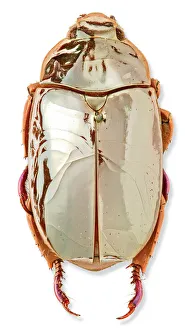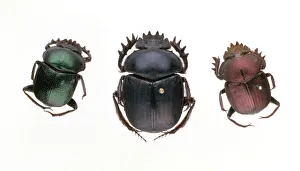Scarabaeid Collection
"Unveiling the Enigmatic World of Scarabaeid: From Chrysina limbata to Titanus giganteus" Step into the fascinating realm of scarabaeids
All Professionally Made to Order for Quick Shipping
"Unveiling the Enigmatic World of Scarabaeid: From Chrysina limbata to Titanus giganteus" Step into the fascinating realm of scarabaeids, where an array of extraordinary beetles awaits. Among them is the captivating Chrysina limbata, known for its shimmering silver exoskeleton that glistens under sunlight. These scarab beetles, with their distinctive metallic hues and intricate patterns, never fail to mesmerize. But let's not forget about the mighty Goliathus goliatus, aptly named after its colossal size and strength. The goliath beetle reigns as one of nature's true marvels with its impressive horn-like projections and robust physique. Venturing further into this diverse family, we encounter various Scarabaeus species showcasing remarkable adaptations. Wallaces Long armed beetle stands out with its elongated limbs designed for swift movement through dense foliage. Meanwhile, Dynastes hercules flaunts its Herculean strength alongside Titanus giganteus – a battle between giants in the world of insects. Not all scarabs are adorned with extravagant features; some find beauty in simplicity. Take Aphodius niger or Beaulieu dung beetle—though humble in appearance—they play a vital role in maintaining ecosystems by recycling organic matter. Traveling across continents brings us face-to-face with Copris fallaciosus—the Kenyan dung beetle—a master architect constructing elaborate tunnels beneath African savannas. Mellissius eudoxus adds another dimension to our journey as it showcases stunning coloration reminiscent of ancient Egyptian artifacts. Heteronychus arator emerges from obscurity as a black beetle endowed with resilience and adaptability—an emblematic survivor amidst changing environments. And once again, Wallaces Long armed beetle captivates us with its unique appendages that aid in navigation through dense jungles.


















